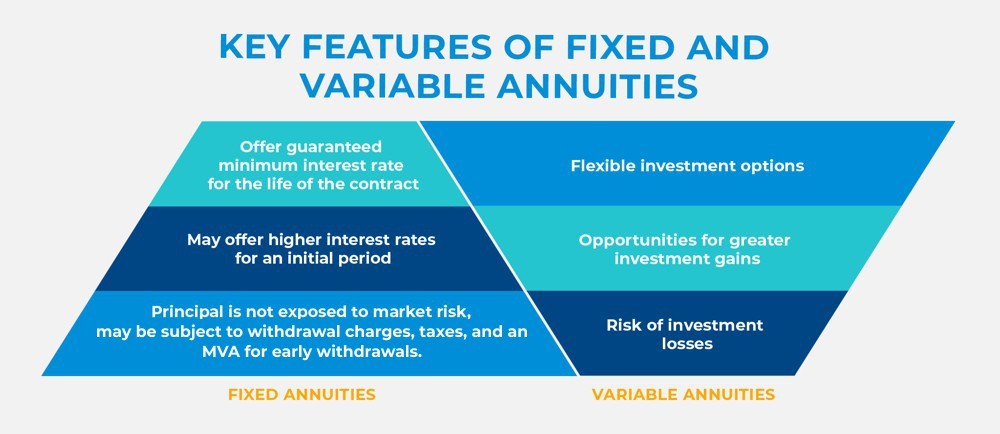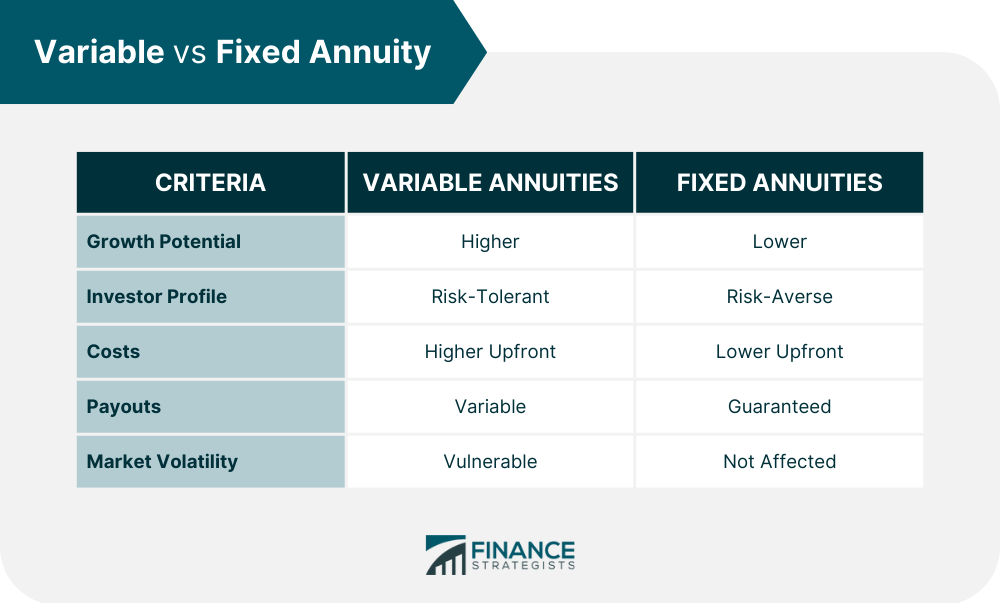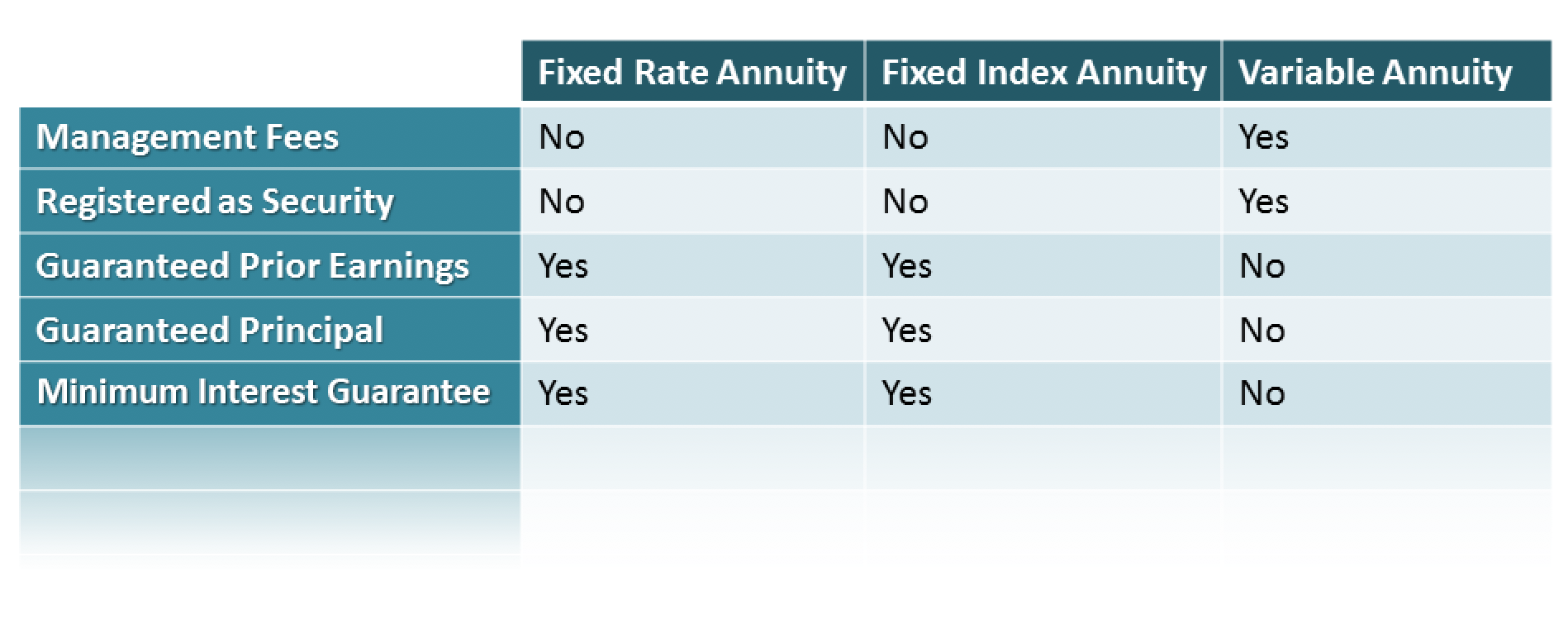All Categories
Featured
Table of Contents
Equally as with a repaired annuity, the owner of a variable annuity pays an insurance provider a round figure or series of repayments in exchange for the promise of a series of future settlements in return. As discussed above, while a dealt with annuity expands at a guaranteed, constant price, a variable annuity grows at a variable rate that depends upon the performance of the underlying investments, called sub-accounts.

During the accumulation phase, assets bought variable annuity sub-accounts grow on a tax-deferred basis and are taxed just when the contract owner withdraws those profits from the account. After the build-up phase comes the income stage. Gradually, variable annuity properties must in theory boost in worth till the agreement proprietor chooses she or he wish to start withdrawing cash from the account.
One of the most substantial concern that variable annuities generally present is high cost. Variable annuities have several layers of charges and expenditures that can, in aggregate, develop a drag of as much as 3-4% of the contract's value yearly. Below are the most typical fees related to variable annuities. This cost makes up the insurance firm for the threat that it presumes under the terms of the contract.
Understanding Financial Strategies A Closer Look at How Retirement Planning Works Defining the Right Financial Strategy Benefits of Choosing the Right Financial Plan Why Deferred Annuity Vs Variable Annuity Is Worth Considering How to Compare Different Investment Plans: Simplified Key Differences Between Different Financial Strategies Understanding the Key Features of Fixed Annuity Vs Equity-linked Variable Annuity Who Should Consider Fixed Income Annuity Vs Variable Growth Annuity? Tips for Choosing the Best Investment Strategy FAQs About Tax Benefits Of Fixed Vs Variable Annuities Common Mistakes to Avoid When Planning Your Retirement Financial Planning Simplified: Understanding Your Options A Beginner’s Guide to Smart Investment Decisions A Closer Look at How to Build a Retirement Plan
M&E expenditure charges are determined as a percentage of the agreement worth Annuity companies pass on recordkeeping and other administrative costs to the agreement proprietor. This can be in the type of a level annual cost or a percent of the contract value. Administrative charges may be consisted of as component of the M&E risk charge or may be examined individually.
These charges can vary from 0.1% for passive funds to 1.5% or even more for actively handled funds. Annuity agreements can be customized in a variety of means to serve the certain demands of the agreement proprietor. Some usual variable annuity bikers include guaranteed minimal build-up advantage (GMAB), guaranteed minimum withdrawal advantage (GMWB), and assured minimal income benefit (GMIB).

Variable annuity contributions offer no such tax reduction. Variable annuities tend to be extremely ineffective automobiles for passing riches to the following generation because they do not enjoy a cost-basis adjustment when the original agreement proprietor passes away. When the proprietor of a taxable financial investment account passes away, the price bases of the financial investments held in the account are gotten used to reflect the market costs of those investments at the time of the owner's death.
Breaking Down Annuities Fixed Vs Variable A Closer Look at Variable Annuity Vs Fixed Indexed Annuity Defining the Right Financial Strategy Benefits of Choosing the Right Financial Plan Why Fixed Index Annuity Vs Variable Annuity Is a Smart Choice How to Compare Different Investment Plans: A Complete Overview Key Differences Between Different Financial Strategies Understanding the Key Features of Annuity Fixed Vs Variable Who Should Consider Variable Vs Fixed Annuities? Tips for Choosing Fixed Annuity Vs Equity-linked Variable Annuity FAQs About Planning Your Financial Future Common Mistakes to Avoid When Choosing Annuities Variable Vs Fixed Financial Planning Simplified: Understanding Fixed Vs Variable Annuity Pros Cons A Beginner’s Guide to Smart Investment Decisions A Closer Look at How to Build a Retirement Plan
Such is not the situation with variable annuities. Investments held within a variable annuity do not obtain a cost-basis adjustment when the initial proprietor of the annuity dies.
One significant problem associated with variable annuities is the potential for disputes of rate of interest that might feed on the component of annuity salespeople. Unlike a monetary consultant, who has a fiduciary obligation to make financial investment choices that benefit the customer, an insurance broker has no such fiduciary obligation. Annuity sales are highly financially rewarding for the insurance coverage experts who market them as a result of high upfront sales compensations.

Lots of variable annuity contracts include language which positions a cap on the percent of gain that can be experienced by particular sub-accounts. These caps avoid the annuity proprietor from totally joining a portion of gains that could otherwise be appreciated in years in which markets produce significant returns. From an outsider's viewpoint, presumably that capitalists are trading a cap on investment returns for the abovementioned guaranteed floor on investment returns.
As kept in mind over, surrender fees can badly restrict an annuity proprietor's ability to move properties out of an annuity in the very early years of the contract. Additionally, while the majority of variable annuities allow contract proprietors to take out a defined amount throughout the build-up phase, withdrawals yet quantity normally result in a company-imposed fee.
Withdrawals made from a set rate of interest investment choice might additionally experience a "market price modification" or MVA. An MVA adjusts the value of the withdrawal to mirror any modifications in rate of interest rates from the time that the money was invested in the fixed-rate alternative to the moment that it was taken out.

Frequently, even the salesmen who sell them do not fully understand just how they work, therefore salesmen in some cases take advantage of a buyer's emotions to sell variable annuities rather than the advantages and viability of the items themselves. We believe that investors must fully recognize what they possess and just how much they are paying to have it.
Breaking Down Your Investment Choices Key Insights on Your Financial Future Breaking Down the Basics of Variable Annuities Vs Fixed Annuities Pros and Cons of Variable Annuities Vs Fixed Annuities Why Fixed Annuity Or Variable Annuity Matters for Retirement Planning How to Compare Different Investment Plans: Simplified Key Differences Between Fixed Index Annuity Vs Variable Annuities Understanding the Key Features of Long-Term Investments Who Should Consider Variable Vs Fixed Annuity? Tips for Choosing the Best Investment Strategy FAQs About Planning Your Financial Future Common Mistakes to Avoid When Planning Your Retirement Financial Planning Simplified: Understanding Your Options A Beginner’s Guide to Pros And Cons Of Fixed Annuity And Variable Annuity A Closer Look at Variable Annuity Vs Fixed Annuity
The exact same can not be said for variable annuity possessions held in fixed-rate financial investments. These properties legally come from the insurance coverage firm and would certainly as a result go to risk if the firm were to stop working. Any guarantees that the insurance firm has agreed to give, such as an ensured minimal revenue advantage, would be in question in the occasion of a business failure.
For that reason, possible buyers of variable annuities must comprehend and take into consideration the economic condition of the issuing insurance provider before becoming part of an annuity contract. While the benefits and drawbacks of numerous sorts of annuities can be questioned, the actual issue bordering annuities is that of viability. Place just, the inquiry is: who should have a variable annuity? This concern can be difficult to answer, given the myriad variations available in the variable annuity universe, yet there are some basic guidelines that can assist investors choose whether or not annuities need to contribute in their economic plans.
As the stating goes: "Customer beware!" This article is prepared by Pekin Hardy Strauss, Inc. Fixed annuity pros and cons. ("Pekin Hardy," dba Pekin Hardy Strauss Wealth Administration) for informative functions just and is not intended as a deal or solicitation for company. The info and data in this post does not comprise legal, tax obligation, audit, investment, or various other expert recommendations
Table of Contents
Latest Posts
Decoding Fixed Index Annuity Vs Variable Annuities A Comprehensive Guide to Investment Choices Defining Pros And Cons Of Fixed Annuity And Variable Annuity Advantages and Disadvantages of Different Re
Exploring the Basics of Retirement Options Key Insights on Immediate Fixed Annuity Vs Variable Annuity What Is Variable Annuities Vs Fixed Annuities? Advantages and Disadvantages of Fixed Income Annui
Breaking Down Immediate Fixed Annuity Vs Variable Annuity Everything You Need to Know About Financial Strategies Defining the Right Financial Strategy Pros and Cons of Various Financial Options Why Fi
More
Latest Posts